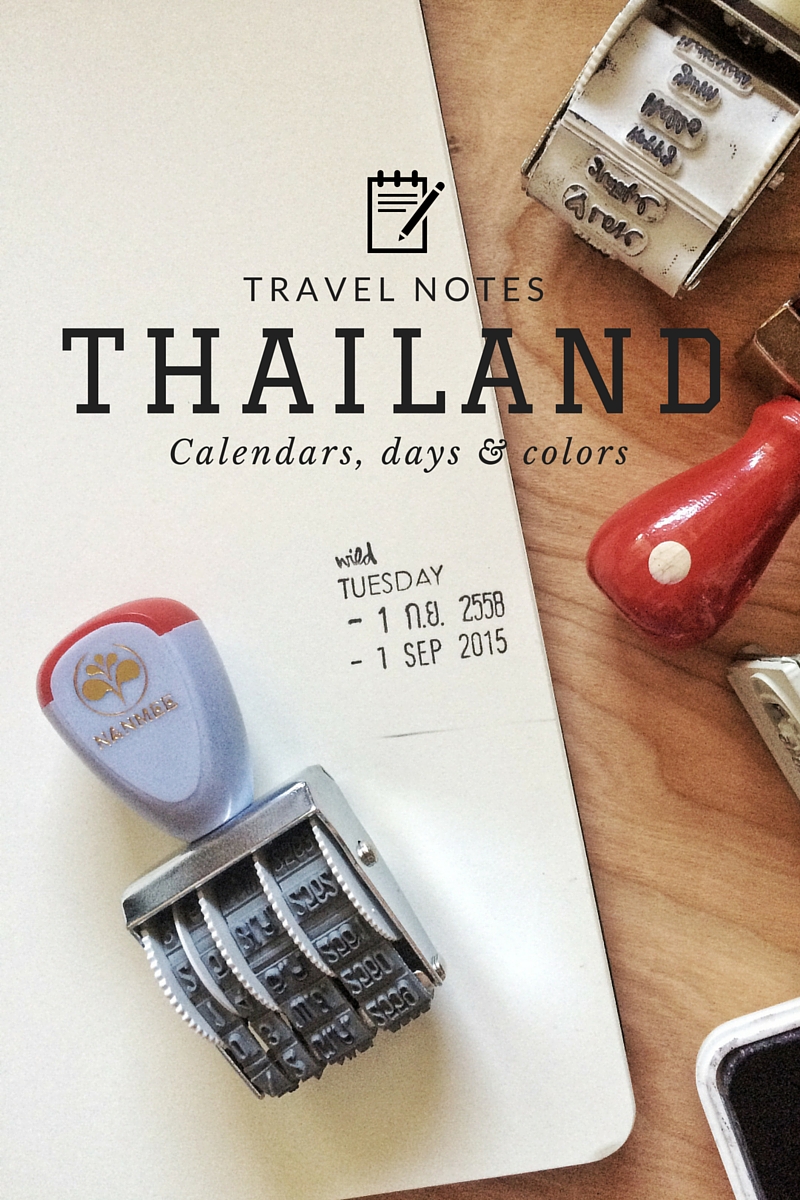
If you have recently traveled to Thailand, you will have noticed that some advertisements, local newspapers, official documents or beaches parties invitations, bring the year 2558.
No, you have not slept the longest night of your life and woke up 543 years later.
And…No, you have not traveled in time.
The explanation is very simple.
There are many standard calendars around the world, Thailand uses a Buddhist calendar and it starts with the death of Buddha, occured in 543 B.C.
So if you ever wanted to know what Thai year it was using the Christian calendar, just add 543.
Buddhist year is used in all offices of the Kingdom, official documents, identity cards, driving licenses etc.
The only exception will be your passport! In fact, the Buddhist year will not be used on your visa and entry stamps into the country so this does not confuse those unfamiliar with this calendar.
Thais have the opportunity to celebrate three national New Year’s celebrations per year.
According to the solar year, New Year's festivities begin on December 31st and continue into the early hours of January 1st.
A minority of Thailand's population are considered ethnic Chinese. The Chinese New Year falls in January/February and it is therefore strongly felt in Thailand. It’s celebrated in many areas of Thailand, but particularly in the Chinatown districts of Bangkok.
But the most popular and traditional celebration that enjoys Thai people (but tourists also!!) is Buddhist New Year, celebrated for three days, on 13-14-15 April and called Songkran.
Songkran festival marks the beginning of the new year in Thailand.
This is an important Buddhist festival and it’s also know as “Water Festival”.
Many Thais visit their local temple to pray and to wash their Buddha icons. This cleansing ritual is to bring luck and prosperity for the coming year.
The real fun happens when Thai people use to sprinkle water on their family members and elders for good fortune. The festival continues on the street of many towns, where people dousing each other with water from buckets, hoses and shot from water guns. Even the elephants join the battle!
A color for every day.
Colors in Thailand have a specific meaning and often link the tradition to everyday life. If you are in Thailand, look at the people around you and watch what kind of t-shirt they’re wearing.
Do they wear yellow t-shirts?
It will be definitely Monday!
In Thai tradition, the week begins Sunday and ends Saturday and each day of the week is assigned a specific color. This is the reason you see many people wearing red on Sunday, yellow on Monday, pink on Tuesdays, green on Wednesday, orange on Thursday, blue or light blue on Friday and purple on Saturday.
August 12 was the Queen’s Birthday. This day is a National holiday but also observed as Mother's Day, since Queen of Thailand is the mother of the nation.
On this day, I was a few kilometers away from Bangkok. Everyone wore a light blue t-shirt. In fact, Her Majesty was born on Friday, a day that is associated with the light blue color.
None of these colors seem more important than yellow, which is the color of the King, who was born on Monday.
In fact, the day of his birthday Thais honor their monarch, wearing a yellow T-shirt.
So, you don’t need to be confused if finding yourself in Bangkok on the SkyTrain on a Monday morning, yellow is the color everywhere you look. ;)






Conoscevo il Songkran, anche se non ho avuto modo di partecipare, ma non conoscevo questa fissa per i colori.. aspetto altri tuoi resoconti dalla Thailandia, su IG ho visto foto bellissime (W il durian..)
RispondiElimina